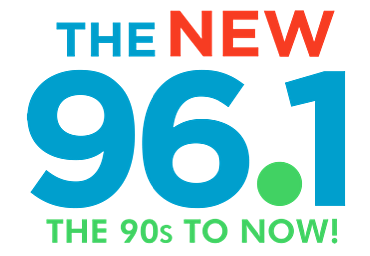![What You Need to Know About Mammography [Sponsored]](http://townsquare.media/site/16/files/2014/03/Southtowns-Radiology.png?w=980&q=75)
What You Need to Know About Mammography [Sponsored]
by Southtowns Radiology
What is a Mammogram?
A mammogram is a specific type of imaging that uses a low-dose x-ray system for examination of the breasts. Most medical experts agree that successful treatment of breast cancer often is linked to early diagnosis, primarily through the use of mammograms.
Why Mammography?
Mammography plays a central part in early detection of breast cancers because it can
show changes in the breast up to two years before a patient or physician can feel them.
Current guidelines from the American Canc
er Society (ACS), the American Medical Association (AMA) and the American College of Radiology (ACR) recommend screening mammography every year for women, beginning at age 40.
The National Cancer Institute (NCI) adds that women who have had breast cancer and those who are at increased risk due to a genetic history of breast cancer should seek expert medical advice about whether they should begin screening before age 40 and about the frequency of screening.
What is breast density?
Breasts are made up of a mixture of fibrous and glandular tissue and fatty tissue. Your breasts are considered dense if you have a lot of fibrous or glandular tissue but not much fat. Density may decrease with age, but there is little, if any, change in most women.
VIDEO: Dr. Jean Weigert, M.D. discusses breast density
How do I know if I have dense breasts?
Breast density is determined by the radiologist who reads your mammogram. There are four categories of mammographic density. The radiologist assigns each mammogram to one of the categories. Your doctor should be able to tell you whether you have dense breasts based on where you fall on the density scale. (See scale below.)
Breast density in the U.S. (See pie chart)
- 10% of women have almost entirely fatty breasts
- 10% have extremely dense breasts
- 80% are classified into one of two middle categories
How does Volpara Density make a difference?
At Southtowns Radiology, we use Volpara to more accurately categorize breast density into the four categories defined by the American College of Radiology. This computer algorithm calculates breast density automatically based on your mammogram scan. The advantage is that you will always get the most consistent picture of your breast density, with no possible variations from one doctor to the next. Knowing what category your breast density falls into helps determine what screening options are best for you.
Why is breast density important?
Having dense breast tissue may increase your risk of getting breast cancer. Dense breasts also make it more diffi cult for doctors to spot cancer on mammograms. Dense tissue appears white on a mammogram. Lumps, both benign and cancerous, also appear white. So, mammograms can be less accurate in women with dense breasts.
If I have dense breasts, do I still need a mammogram?
Yes. A mammogram is the only medical imaging screening test proven to reduce breast cancer deaths. Many cancers are seen on mammograms even if you have dense breast tissue.
Are there any tests that are better than a mammogram for dense breasts?
In breasts that are dense, cancer can be hard to see on a mammogram. Studies have shown that ultrasound and magnetic resonance imaging (MRI) can help find breast cancers that can’t be seen on a mammogram. However, both MRI and ultrasound, show more findings that are not cancer, which can result in added testing and unnecessary biopsies. Also, the cost of ultrasound and MRI may not be covered by insurance.
What should I do if I have dense breasts? What if I don’t?
If you have dense breasts, please talk to your doctor. Together, you can decide which, if any, additional screening exams are right for you. If your breasts are not dense, other factors may still place you at increased risk for breast cancer — including a family history of the disease, previous chest radiation treatment for cancer and previous breast biopsies that show you are high risk. Talk to your doctor and discuss your history. Even if you are at low risk, and have entirely fatty breasts, you should still get an annual mammogram starting at age 40.
Buffalo Mammograms are available at the following Southtowns Radiology locations:
- Hamburg 3040 Amsdell Road, Hamburg, NY 14075 • Phone:
 716-649-9000 Directions
716-649-9000 Directions - Orchard Park 3050 Orchard Park Road, West Seneca, NY 14224 • Phone:
 716-558-5400 Directions
716-558-5400 Directions
More From The New 96.1 WTSS









